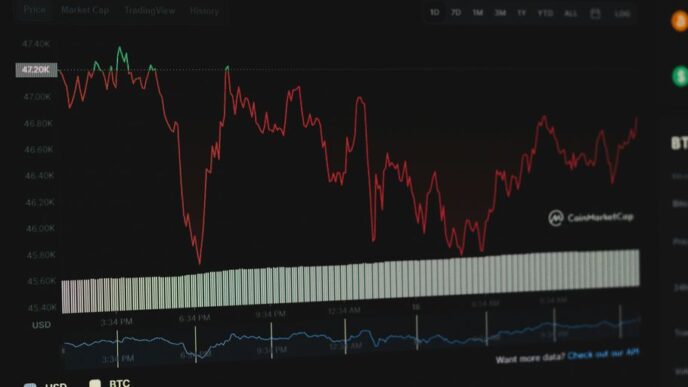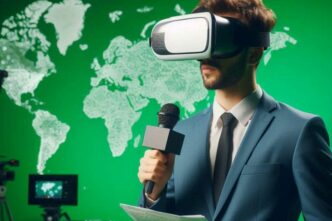Discover the fascinating world of neurotechnology, where neuroscience meets technology. Explore its applications, benefits, and potential impact on healthcare and human performance. Join us on this journey to uncover the exciting possibilities of neurotechnology.
Introduction:
Neurotechnology, the fusion of neuroscience and technology, is revolutionizing our understanding of the brain and its capabilities. From advanced brain imaging to brain-computer interfaces, this interdisciplinary field offers a plethora of possibilities for exploring human cognition. In this article, we will delve into the realm of neurotechnology, unravel its core concepts, and explore its practical applications in research, healthcare, and everyday life.
What is Neurotechnology?
Neurotechnology encompasses a wide range of scientific disciplines, including neuroimaging, neuromodulation, and neural engineering. It involves leveraging cutting-edge hardware and software to measure and manipulate brain activity in real-time. Techniques such as electroencephalography (EEG), functional magnetic resonance imaging (fMRI), and transcranial magnetic stimulation (TMS) allow researchers to gain valuable insights into brain connectivity, function, and behavior.
The Fascinating Workings of Neurotechnology:
Neurotechnology operates by analyzing and influencing brain activity using various tools and methods. Non-invasive brain imaging techniques like fMRI and EEG measure changes in blood flow and electrical activity, respectively, providing crucial information about brain function. Neuromodulation, another approach, involves applying electrical or magnetic stimulation to specific brain regions to modulate neural activity, with successful applications in treating conditions like Parkinson’s disease and depression. Advancements in artificial intelligence have also empowered neurotechnology, enabling machine learning algorithms to identify patterns in brain scans that might elude traditional analysis methods.
Exploring Different Types of Neurotechnology:
Several types of neurotechnology have emerged to explore the complexities of the human brain. Magnetic resonance imaging (MRI) employs powerful magnets and radio waves to generate detailed brain images. Electroencephalography (EEG) measures electrical brain activity through scalp electrodes, aiding in the diagnosis of epilepsy and sleep disorders. Transcranial magnetic stimulation (TMS) applies magnetic fields to specific brain regions to modulate neural activity, showing promise in treating depression, chronic pain, and addiction. Other technologies like functional near-infrared spectroscopy (fNIRS), positron emission tomography (PET), and deep brain stimulation (DBS) offer unique insights into brain function across various contexts.
Pros and Cons of Neurotechnology:
Neurotechnology presents numerous advantages and potential challenges. On the positive side, it holds the potential to revolutionize healthcare by enabling more effective treatments for neurological conditions like Alzheimer’s and Parkinson’s diseases. Moreover, brain-computer interfaces (BCIs) can enhance human performance, allowing individuals with paralysis to control prosthetic limbs or improving cognitive abilities and athletic performance. However, ethical concerns related to privacy and autonomy arise with the use of technology to manipulate the brain. There are also fears of potential misuse by unauthorized entities for purposes like mind control or espionage. Therefore, careful consideration and responsible implementation are necessary when integrating neurotechnology into mainstream society.
Pros and Cons of Neurotechnology
Neurotechnology, the fascinating intersection of neuroscience and technology, offers numerous advantages and potential challenges. Understanding both the benefits and drawbacks is crucial for responsible implementation and informed decision-making. Here are the pros and cons of neurotechnology:
Pros:
Advancements in Healthcare: Neurotechnology has the potential to revolutionize healthcare by improving the diagnosis and treatment of neurological disorders. It enables a deeper understanding of brain functioning, leading to more effective therapies for conditions like Alzheimer’s disease, Parkinson’s disease, epilepsy, and chronic pain.
Enhanced Human Performance: Brain-computer interfaces (BCIs) and other neurotechnological tools can enhance human performance. They offer possibilities for individuals with paralysis to control prosthetic limbs or communicate using their thoughts. BCIs may also be used to enhance cognitive abilities and athletic performance.
Research and Scientific Discoveries: Neurotechnology provides researchers with powerful tools to study the complexities of the brain. Techniques such as functional magnetic resonance imaging (fMRI) and electroencephalography (EEG) allow for non-invasive exploration of brain activity and provide valuable insights into cognition, behavior, and neural processes.
Cognitive Enhancement: Certain neurotechnological interventions, like brain stimulation techniques, have shown potential for cognitive enhancement. They may improve memory retention, learning abilities, and attention span, offering possibilities for individuals with cognitive impairments or age-related cognitive decline.
Rehabilitation and Assistive Technology: Neurotechnology has promising applications in rehabilitation and assistive technology. Brain-controlled prosthetic limbs and devices empower individuals with disabilities to regain mobility and independence, enhancing their quality of life.
Cons:
Ethical Considerations: The use of neurotechnology raises ethical concerns, particularly related to privacy and autonomy. As these technologies advance, it becomes crucial to establish guidelines and regulations to protect individuals’ privacy rights and ensure informed consent for their use.
Potential Misuse: Like any powerful tool, neurotechnology can be misused if placed in the wrong hands. There are concerns about the potential exploitation of these technologies for nefarious purposes such as mind control or espionage. Safeguards and regulations should be in place to prevent unauthorized and unethical applications.
Safety and Long-Term Effects: The long-term effects and potential risks of neurotechnological interventions are still being studied. Ensuring the safety and efficacy of these interventions is paramount to protect individuals’ well-being. Comprehensive research and rigorous testing are necessary to minimize potential risks.
Accessibility and Affordability: Neurotechnology can be costly and may not be accessible to all individuals who could benefit from it. Ensuring equitable access to these technologies is essential to prevent further disparities in healthcare and assistive technology.
Unintended Consequences: The intricate nature of the brain and its functioning means that interventions and manipulations may have unintended consequences. It is crucial to consider potential side effects, both short-term and long-term, when implementing neurotechnological interventions.
Neurotechnology presents exciting possibilities for healthcare, human performance enhancement, and scientific research. It has the potential to transform lives and deepen our understanding of the brain. However, ethical considerations, safety concerns, accessibility, and potential misuse must be carefully addressed. By acknowledging both the pros and cons of neurotechnology, we can navigate this emerging field responsibly and leverage its benefits while minimizing risks.
Current Applications of Neurotechnology:
Neurotechnology has already found practical applications in various fields. In medicine, it aids in the diagnosis and treatment of neurological disorders, including Parkinson’s disease, epilepsy, and chronic pain. The gaming industry has embraced neurotechnology to create immersive experiences through brain-computer interfaces, allowing users to control characters using their thoughts. Brain-machine interfaces (BMIs) empower individuals with disabilities to control prosthetic limbs or interact with computers using neural signals. Furthermore, ongoing research explores the use of neurotechnology for cognitive enhancement, improving memory retention and learning capabilities.
The Promising Future of Neurotechnology:
Neurotechnology’s future appears incredibly promising, with potential advancements that could significantly improve lives. It holds the key to managing currently untreatable neurological disorders and conditions by developing innovative approaches. Neurostimulation offers hope for chronic pain and depression sufferers, while brain-computer interfaces can enhance the lives of individuals with disabilities. However, the safety and non-invasiveness of these technologies must be ensured, alongside addressing concerns of misuse and privacy. As neuroscience progresses, we can expect groundbreaking discoveries and exciting developments in the ever-evolving field of neurotechnology.
Conclusion:
Neurotechnology represents an exciting frontier at the intersection of neuroscience and technology. It offers remarkable opportunities to deepen our understanding of the brain and transform healthcare. While ethical considerations and responsible implementation are essential, neurotechnology holds immense potential for improving human lives. As researchers continue to unlock the mysteries of the human brain, we eagerly anticipate the remarkable discoveries and advancements that lie ahead in this captivating realm of neurotechnology.













